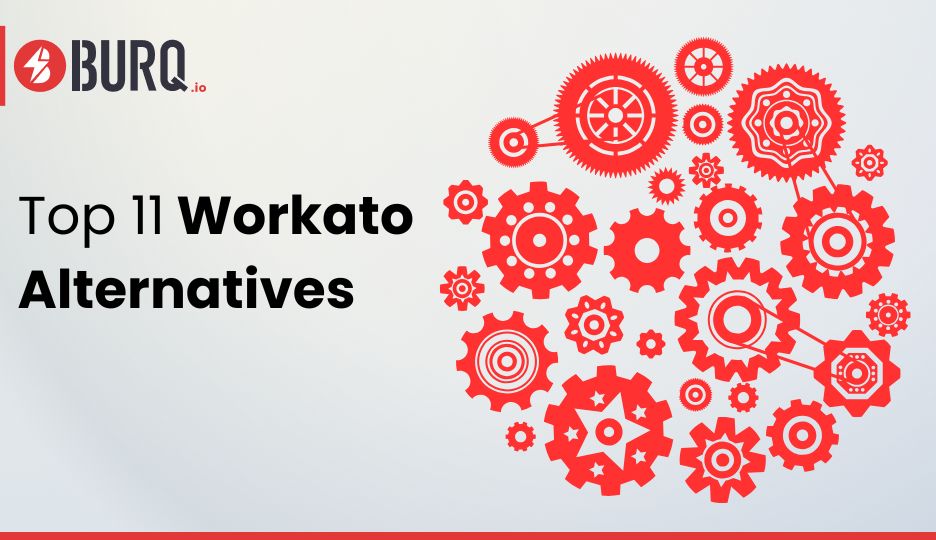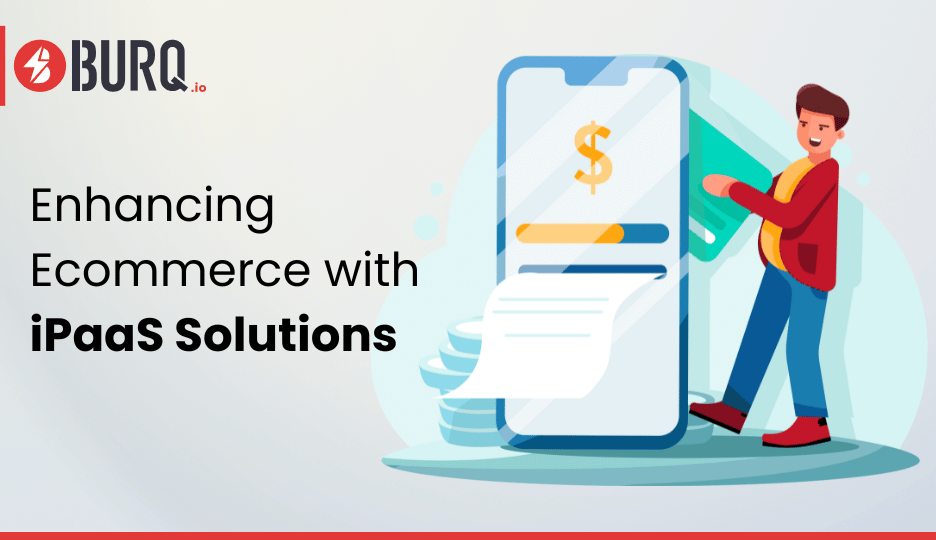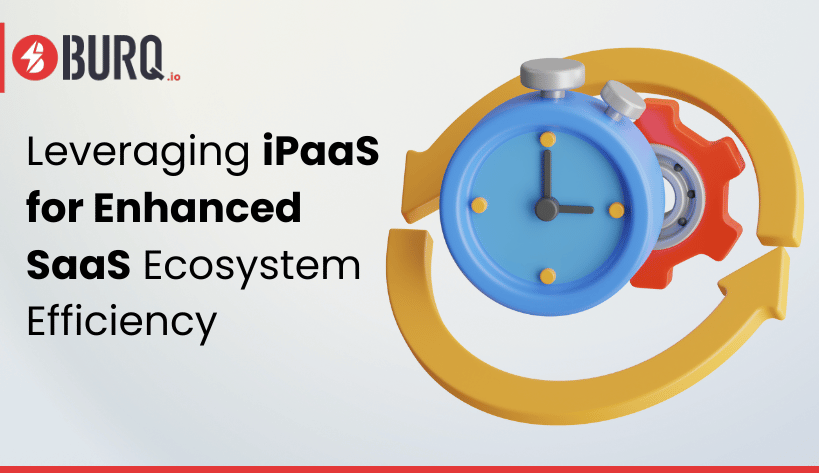Today’s world functions on an intricately woven web of digital solutions, each catering to specific needs. Thus, smoothly integrating numerous software solutions is mandatory in today’s cyberspace. Although daunting, iPaaS, or Integration Platform as a Service, makes it a breeze.
iPaaS acts as a bridge connecting different software applications to ensure seamless data flow and maximum operational efficiency. When iPaas is integrated with Software as a Service (SaaS), iPaas creates a powerful duo that accelerates the overall efficiency of your SaaS environment.
As businesses continuously and increasingly rely on multiple SaaS applications, an efficient integration platform becomes essential. iPaaS provides an excellent framework for integrating different applications, enabling them to communicate efficiently. This improves functionality and enriches the user experience by ensuring continuous and accurate data sharing between platforms.
In recent years, owing to the bulk of data generated, integration platforms have shifted from on-premises middleware solutions to cloud-based services. In the past, businesses relied on complex, in-house integration solutions that were costly and time-consuming. However, with the emergence of cloud computing, integration has become highly accessible and scalable. iPaaS is the next step forward in this change. It provides a cloud-based solution that simplifies integration processes while providing enhanced scalability.
Comprehending iPaaS and SaaS: Definitions and Distinctions
Before discussing iPaaS or SaaS further, we must understand what these terms mean and how they differ. iPaaS, or Integration Platform as a Service, is a cloud-based service that enables the integration of different applications and data systems. It provides an integrated platform where multiple software applications communicate easily, ensuring data flows smoothly between systems. This powerful integration is mandatory for businesses that use various software solutions. It also helps them to operate efficiently by reducing manual data entry and increasing data accuracy.
On the other hand, SaaS, or Software as a Service, is a cloud-based software distribution model in which applications are hosted by a service provider and made available to clients through the Internet. SaaS applications are subscription-based and provide businesses with a cost-effective method of accessing advanced software solutions without requiring any on-premises infrastructure.
Although iPaaS and SaaS serve to meet different requirements, they complement each other excellently. iPaaS provides the integration framework that enables various SaaS applications to work together smoothly. Without iPaaS, businesses would strive to manage the difficulties of combining numerous SaaS applications. This will, in turn, lead to inefficiencies and create data silos.
The Role of iPaaS in Enhancing SaaS Capabilities
iPaas plays a pivotal role in boosting SaaS capabilities, so let’s look at it in-depth.
How iPaaS Supports SaaS Applications
iPaaS is necessary for SaaS application support since it provides an easy integration framework and acts like a central hub. This framework allows different SaaS applications to communicate with each other, ensuring that data is consistently shared across platforms. Businesses may increase operational efficiency by automating workflows, minimizing manual data entry, and improving data accuracy with iPaaS for SaaS.
Exclusive Benefits of iPaaS for SaaS Companies
iPaaS for SaaS offers a myriad of benefits to companies, one of the most eminent ones being scalability. iPaaS solutions are developed to scale with your business, enabling you to integrate additional applications as your needs change. This high scalability guarantees that your integration framework can grow as your business grows.
Another notable benefit is easy Connectivity. iPaaS solutions come with pre-built connectors that make it easy to integrate various applications, no matter how complex they are. This ease of connectivity enables businesses to form a connected environment where all applications work together smoothly.
Finally, iPaaS reduces the time to market by simplifying the integration process. Traditional integration methods can be time-consuming and costly and require significant resources for implementation. On the contrary, with the help of iPaaS, businesses can swiftly integrate new applications, enabling them to market products and services quickly.
Comparative Analysis of iPaaS Solutions
Let’s now examine the variety of iPaas Solutions available for businesses, along with their pros and cons.
Different Types of iPaaS Solutions
When considering iPaaS for SaaS, you must first understand the different types of iPaaS solutions available. These include Enterprise iPaaS, Unified API, and Embedded iPaaS. Each iPaaS solution has its own unique benefits and features.
Enterprise iPaaS
The Enterprise iPaaS was exclusively developed for large organizations that require complex application integration. It provides a strong platform that can support a high volume of data and a huge number of applications.
Unified API iPaaS
Unified API iPaaS simplifies integration by providing a single API that can connect to multiple applications. This type of iPaaS is highly beneficial for businesses that want to reduce the complexity of their integration processes.
Embedded iPaaS
Embedded iPaaS is developed for SaaS companies that want to embed integration capabilities directly in their applications. This iPaaS allows SaaS providers to facilitate their customers’ easy integration with other applications, thus boosting the user experience.
Strengths and Weaknesses of Each Type of iPaas
Each iPaaS solution has its unique pros and cons. Enterprise iPaaS offers powerful features and can handle complex integrations, but it may be a surplus for smaller businesses, as it will be much more than their requirement. Unified API iPaaS simplifies integration by reducing the number of API connections but may not provide the high flexibility that Enterprise iPaaS offers. If we talk about Embedded iPaaS, it enhances the user experience by giving built-in integration features, but it may need more development resources for implementation.
Integration Challenges in SaaS Environments
Although SaaS is a blessing for businesses today, some challenges must be considered prior to implementation.
Common Integration Challenges
SaaS providers often come across various integration challenges. These common issues include the following:
- Data silos
Data silos occur when different applications store data separately, making it difficult to access and share the same information in the entire organization.
- Incompatible applications
Incompatible applications are another major challenge, as various SaaS applications may use different data formats or APIs and might become incompatible with each other.
- Complex integration processes
This can also be a major obstacle for SaaS providers; complex integration processes require a lot of time and resources for implementation.
How iPaaS Addresses These Challenges
iPaaS successfully overcomes these hurdles by providing a unified platform for integrating different SaaS applications. iPaaS solutions provide pre-built connectors and APIs that simplify the integration process by enabling various applications to communicate efficiently. This smooth connectivity prevents data silos, ensuring that data transmits easily in the entire organization.
In Addition, iPaaS supports a variety of data formats and APIs, making it easy to integrate incompatible applications. With the help of iPaaS, businesses can automate the integration process, minimizing the need for manual coding and customization.
Real-World Examples of iPaaS Implementation
Several SaaS companies have successfully implemented iPaaS solutions to overcome their integration problems. For example, a leading e-commerce platform used iPaaS to integrate its different software applications, such as CRM, ERP, and inventory management systems. By using iPaaS, the company could simplify its processes, increase data accuracy, and reduce the time needed for order processing.
A further example is a SaaS provider that used iPaaS to integrate its customer support software with its billing and accounting systems. This integration equipped the company to automate their billing processes and enhance customer service.
iPaaS Adoption Strategies
Now that you know iPaas for SaaS, let’s discuss additional factors influencing its implementation.
Best Practices for SaaS Companies
For SaaS companies contemplating adopting iPaaS, there are numerous best practices to consider. First, evaluate your current integration needs and identify the exact issues you want to overcome with iPaaS. This assessment will help determine the type of iPaaS solution that fulfills your requirements.
Secondly, select an iPaaS provider offering the required features and capabilities. Look for a provider that provides an extensive range of connectors, supports multiple data formats, and provides solid security features.
Thirdly, it is always a good idea to involve key stakeholders in the adoption process. Ensure that your IT team and any departments affected by the integration are in the loop during decision-making.
Ultimately, providing training and support for your team is an important step. While iPaaS simplifies the integration process, ensuring that your team is well-acquainted with the platform and knows how to use it proficiently is vital.
Factors to Consider When Choosing an iPaaS Provider
When selecting an iPaaS provider, consider scalability as your integration needs may evolve with your business. Moreover, Security is another critical concern. Ensure the provider offers robust security features, including data encryption and access controls.
Ease of use is also essential. Seek an iPaaS provider that offers an intuitive interface and user-friendly tools for setting up and managing integrations. Finally, evaluate the cost of the iPaaS solution, including setup fees, subscription costs, and maintenance expenditures.
Conclusion
In summary, iPaaS for SaaS provides several advantages, such as enhanced efficiency, scalability, and connectivity. Using iPaaS, SaaS companies can boost overall performance, improve operations, and overcome common integration problems. iPaaS will become increasingly important as the SaaS market develops in terms of helping companies attain their objectives and remain competitive.
Now is the right time for SaaS providers to consider implementing iPaaS solutions to boost their integration capabilities and improve efficiency. Whether you’re a small business striving to streamline your operations or a large enterprise that wants to scale your integrations, iPaaS offers a flexible and scalable solution that can meet all your needs. Don’t miss out on the opportunity to employ iPaaS for an enriched SaaS environment, and start exploring your options today by visiting burq.io


